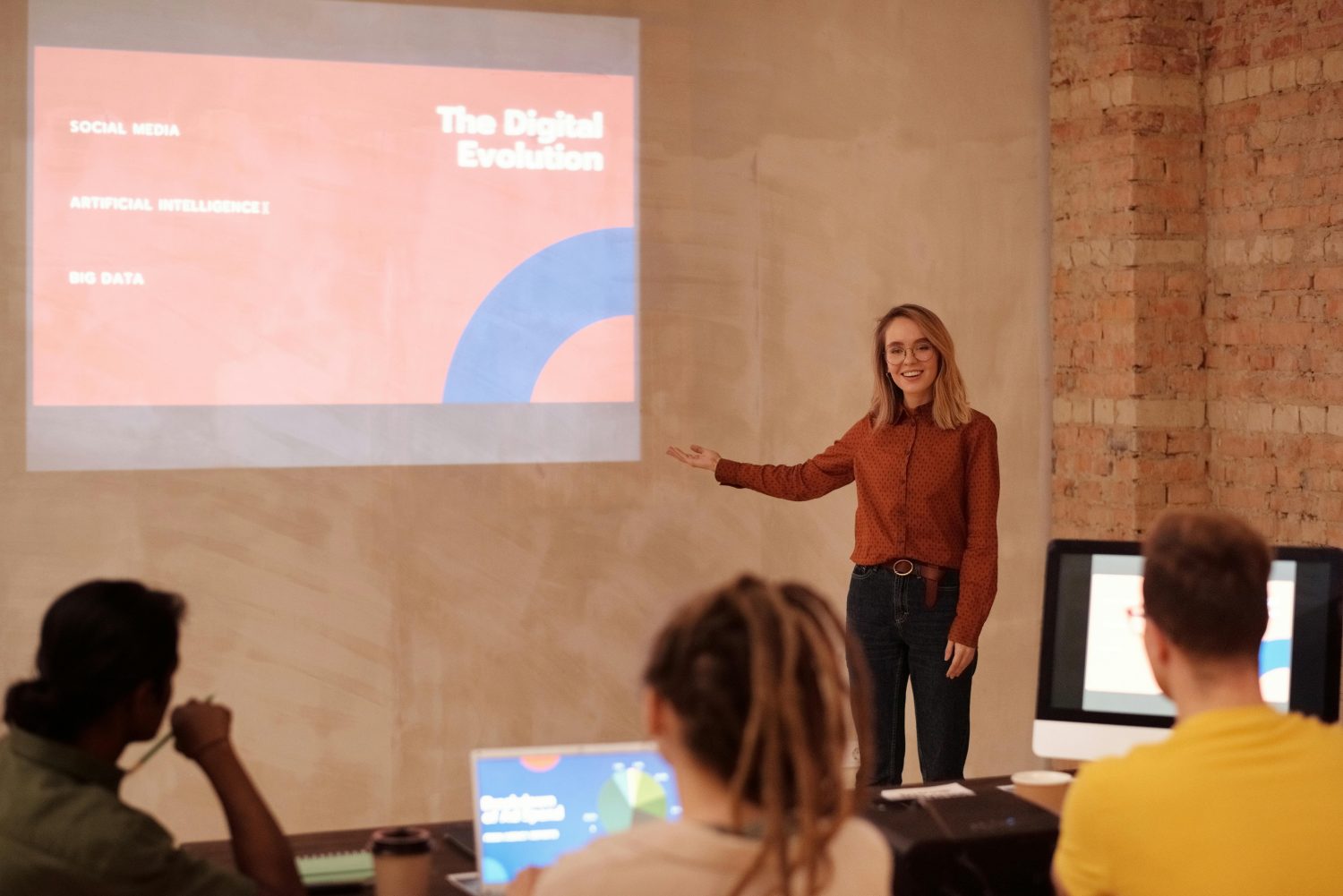In the fast-paced world of social media, capturing your audience’s attention is more important than ever. Storytelling has become one of the most effective ways to gain followers on platforms like Instagram and TikTok. Recent analysis of 4,000 short-form videos on these platforms showed that content involving storytelling generated an impressive 23.09% more views and 19.52% more comments compared to other types of content.
Here are 11 types of storytelling content that you can experiment with to elevate your social media presence:
1. Personal anecdotes
Sharing personal anecdotes is a good way to connect with your audience. By telling stories from your own life, whether they’re funny, or insightful, you create a personal connection with your followers. These anecdotes can humanize your brand, making it more relatable and trustworthy.
For example, you could share a story about a challenge you overcame in your business journey, a memorable experience with a customer, or a funny incident related to your field. Personal anecdotes help to showcase the personality behind your brand and create a sense of authenticity that is valued by audiences.
2. Customer success stories
Highlighting customer success stories is a great way to showcase the impact of your products or services. These stories illustrate real-life examples of how your offerings have made a positive difference for your customers. By featuring testimonials, case studies, or interviews with satisfied clients, you not only show their achievements but also build credibility and trust with potential customers.
Customer success stories provide social proof, showing others that your products or services can bring real results. They offer potential customers insights into how your offerings can solve their problems or fulfill their needs. These stories humanize your brand by putting a spotlight on the experiences and successes of real people, making your marketing more relatable and persuasive.
For instance, imagine a fitness company showcasing a customer’s journey from struggling with their fitness goals to achieving significant weight loss and improved health through personalized coaching. By featuring before-and-after photos, testimonials, and a brief interview with the customer discussing their journey, the company can effectively demonstrate the results of their services.
3. Behind-the-scenes glimpses
Offering behind-the-scenes glimpses gives your audience a peek into the inner workings of your business or creative process. These insights humanize your brand and foster a deeper connection with your followers by showing the people, processes, and personalities behind your products or services.
Behind-the-scenes content provides transparency and authenticity, allowing your audience to see the effort and passion that goes into what you do. It adds a personal touch to your brand, making it more relatable and approachable. By sharing these glimpses, you can build trust and loyalty among your audience, who appreciate the opportunity to get to know the real people behind the brand.
A tech startup could share behind-the-scenes footage of their developers brainstorming new features for an upcoming app update. They might interview team members about their roles and showcase the collaborative process of coding, testing, and refining the software. This behind-the-scenes look not only educates followers about the company’s innovation process but also builds anticipation for the new product release.
4. Product origin stories
Product origin stories provide a unique look into where your business came from and how it found it’s mission. These stories show the inspiration, development process, and journey behind the creation of your products or services. By sharing how your idea came to life, the challenges faced, and the passion driving its creation, you can humanize your brand and build deeper emotional connections with your audience. Product origin stories not only showcase the unique value of your offerings but also highlight your brand’s values, commitment to quality, and innovation.
Connection matters to customers who appreciate authenticity and transparency, offering looks into the craftsmanship and dedication behind what they purchase. Integrating product origin stories into your social media strategy can differentiate your brand, foster trust, and evoke pride among your followers in choosing your products or services.
5. Employee spotlights
Employee spotlights focus on the individuals who contribute to your company’s success. These features celebrate the talent, dedication, and stories of your team members, showing their roles and achievements within your organization. By showcasing the people behind your brand, you continue to create a personal connection with your audience.
Employee spotlights can include interviews, behind-the-scenes footage, or stories about personal milestones and professional growth. These narratives not only recognize the contributions of your employees but also reinforce your company culture and values.
They demonstrate to your audience that your organization values its team members and has a supportive work environment. Sharing employee spotlights on social media, you can build morale within your team, attract potential hires who likes your culture, and strengthen relationships with your audience.
6. Charitable initiatives
Charitable initiatives gives a look at your company’s commitment to making a positive impact beyond just business goals. These initiatives showcase the charitable causes and community involvement efforts your company supports. By sharing stories of philanthropy, volunteerism, or partnerships with nonprofit organizations, you demonstrate your brand’s values and dedication to social responsibility.
Charitable initiatives on social media can include updates on fundraising events, volunteer activities, or collaborations with charitable organizations. These stories not only inspire your audience but also encourage engagement and support for meaningful causes.
By promoting charitable initiatives, you can build goodwill, strengthen your brand’s reputation, and attract socially-conscious customers who align with your values. Sharing these stories humanizes your brand, showing that your company is not only focused on profitability but also on making a positive difference in the world.
7. Industry insights
Industry insights provide valuable information and expertise related to your field of business. These content pieces offer analysis, trends, and predictions that educate and inform your audience about developments within your industry.
By sharing insights, you position your brand as a knowledgeable authority and thought leader in your niche. Industry insights can cover topics such as market trends, technological advancements, regulatory changes, and consumer behavior shifts. They help your audience stay informed and adapt to changes, showcasing your brand’s relevance and expertise. Using social media to share industry insights can include infographics, data-driven articles, or expert interviews.
These content pieces not only attract your audience but also attract industry professionals seeking valuable information and updates. By consistently providing insights, you build credibility, trust, and reinforce your brand’s position as a go-to resource within your industry.
8. Inspirational tales
Inspirational stories share uplifting stories that motivate your audience on a personal level. These stories show individuals or organizations overcoming challenges, achieving success, or making a positive impact.
By showcasing these stories, you inspire and empower your audience, demonstrating the potential for personal growth. Inspirational stories can feature personal achievements, stories of perseverance, or examples of innovation and creativity. They evoke emotions, spark motivation, and encourage your audience to strive for their own goals.
These narratives not only engage your audience emotionally but also builds on your brand’s values and goals. By sharing inspirational stories, you connect with your audience on a deeper level, and build a sense of community and positivity around your brand.
9. Humorous encounters
Humorous encounters bring lighthearted moments to your social media presence, entertaining your audience and fostering a sense of connection through laughter. These funny and relatable experiences can bring joy and humor to your followers. By sharing humorous content, your brand can be seen as a positive and enjoyable atmosphere for your audience. Humorous encounters can include funny incidents from within your company, amusing customer interactions, or playful industry-related jokes.
They lighten the mood and offer a break from the everyday, engaging your audience in a memorable and entertaining way. They can also involve sharing memes, or playful videos that are relevant to your audience’s sense of humor.
These moments not only entertain but also strengthen relationships with your audience by creating a shared experience of laughter and enjoyment. By adding humor into your social media strategy, you enhance engagement, increase brand likability, and build a more relatable and approachable image for your brand.
10. Overcoming challenges
Sharing stories of overcoming challenges highlights resilience and determination, inspiring your audience with real-life examples of perseverance and success. These narratives showcase how individuals or organizations have faced obstacles, demonstrating the power of persistence and problem-solving. By sharing these stories, you motivate your audience to stay resilient in their own pursuits and to view challenges as opportunities for growth.
Utilizing social media to share stories of overcoming challenges can include personal anecdotes, case studies, or interviews with individuals who have triumphed over adversity. Sharing stories of overcoming challenges helps to build a supportive community, where your audience feels inspired to tackle their own obstacles.
Showing authenticity with your audience through shared experiences of perseverance and achievement is a crucial step towards gaining attention from more viewers.
11. Lessons learned
Sharing lessons learned from experiences, offers valuable wisdom and guidance to your audience. They provide important life or business lessons, reflecting on past successes, failures, and pivotal moments. Sharing lessons you have learned provides your audience with practical knowledge for personal or professional growth.
These lessons not only educate your audience but also demonstrate humility, showing your willingness to learn and adapt. You show that you have a learning culture within your community, encouraging dialogue and shared wisdom among your audience. This assists your brand, authenticity and true value for your audience through different perspectives.
Conclusion
Applying stories into your content doesn’t have to be a hard task. With a little creativity, you can create valuable content into most formats, such as videos, images, and captions. The key is to ensure that your stories serve a purpose and align with your brand’s message.
You can not only boost engagement but also grow stronger connections with your audience. Well-crafted stories have the power to evoke emotions, build trust, and ultimately convert followers into loyal customers.
Frequently Asked Questions
Q: How can storytelling help my brand on social media?
Storytelling allows you to connect with your audience on a deeper level, making your brand more relatable and memorable. By sharing authentic stories, you can build trust, evoke emotions, and create a lasting impression on your followers.
Q: What makes a good story for social media?
A good story for social media should be concise, engaging, and relevant to your target audience. It should have a clear beginning, middle, and end, and convey a message that aligns with your brand’s values and goals.
Q: How long should my stories be on Instagram and TikTok?
Keep your stories short and sweet. On Instagram, stories can be up to 15 seconds long, while on TikTok, videos can range from 15 seconds to 10 minutes. Aim to capture your audience’s attention within the first few seconds and deliver your message effectively.
Q: Can I use storytelling in my product promotions?
Absolutely! Storytelling can be a powerful tool for product promotions. Share the story behind your product’s creation, highlight customer success stories, or demonstrate how your product solves a problem. This approach can make your promotions more engaging and persuasive.
Q: How often should I post storytelling content?
The frequency of your storytelling content will depend on your overall content strategy and your audience’s preferences. Aim to strike a balance between storytelling and other types of content. Consistently incorporating stories into your posts will keep your followers engaged and coming back for more.









